Ask A Researcher
November 2016
2016 North Dakota Statewide Housing Needs Assessment: A Brief Overview of the Population and Housing Forecast component
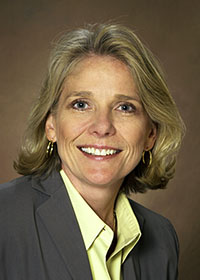
Dr. Nancy Hodur is the Center for Social Research Director at North Dakota State University (NDSU). Nancy’s primary research areas include socio-economic impact assessment, community and economic development, and natural resource management. In this article, she gives a brief overview of the recently released update of the North Dakota Statewide Housing Needs Assessment – Population and Housing Forecasts, which is a joint research project of NDSU’s Center of Social Research and the Department of Agribusiness and Applied Economics.
The Statewide Housing Needs Assessment was developed to provide an overview of current conditions and important trends that affect housing dynamics. These trends include historical shifts in population and demographics, and changes in the state’s economy. In addition, the Statewide Housing Needs Assessment makes forecasts of future housing needs based on population projections and household characteristics such as age, income, and homebuyer type. This article provides a brief discussion of some of the key finding of Component 1 of the Study, Population and Housing Forecast. The complete report can be found at https://www.ndhfa.org/wp-content/uploads/2020/07/NDSHNA_2016_Component1_Final_November.pdf .
The dynamic changes in economic and socio-economic conditions that North Dakota has experienced in recent years make forecasting difficult. To address those challenges, population, housing needs, and projected housing inventory were modeled by balancing recent socio-economic conditions with more historical patterns of key factors to model future conditions. While efforts were made to balance recent and historical trends to project future conditions, how well these forecasts will reflect future conditions is perhaps of greater uncertainty than in previous housing needs assessments considering the rapid changes that have occurred in the state. Regardless of challenges associated with forecasting during periods of rapid change, the patterns that emerge from this study are useful in understanding the magnitude of potential future change and can guide planning for future housing needs.
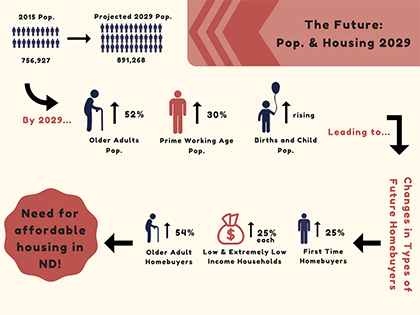
North Dakota’s population has changed dramatically during the past decade and a half, with growth rates outpacing all 50 states in each of the past four years. Currently at 756,927 people, North Dakota’s population grew 13 percent from 2010 to 2015. However, population growth has varied regionally. Population in some rural regions declined from 2000 to 2005, but subsequently grew since 2005 to return to population levels similar to those of the early 2000s.
The characteristics of the state’s population are changing as well. North Dakota was the only state that became younger in 2015. The age structure in the state is being impacted by a strong, diversified economy in the eastern part of the state and the substantial growth experienced by communities in western North Dakota as a result of energy development. The prime working age category, the 45 to 64 age cohort, grew consistently during the 2000s in response to the state’s robust economy. An upturn in the 25 to 44 age cohort, which is the prime child bearing age category, has resulted in an increase in the birth rate. For the first time since the 1980 the number of children under age 14 grew. Future population growth will be driven by two factors, in-migration and an increase in natural births.
Population is projected to continue to grow over the course of the 15-year study period. Population is projected to increase by roughly 134,000 to just over 891,000 by 2029. However, there is substantial regional variability in population growth. Recent trends would suggest continued strong growth in Region I (Williston). However, projections should be monitored in Region I as new data that will better quantify the effects on the oil and gas industry slowdown become available. Population projections for regions of the state that are home to four of the five largest urban centers also indicated strong growth. Population projections in Regions II (Minot), V (Fargo), VII (Bismarck), and VIII (Dickinson) ranged from 22 to 28 percent increase over the course of the study period, which would translate into roughly 1.5 to 1.9 percent average annual growth. Population was projected to remain similar in Region III (Devils Lake) and VI (Jamestown) through 2029. A slight 4 percent decline in population is projected for Region VI, while slight growth of 4 percent is projected for Region III. Modest growth of 8 percent is projected for Region IV (Grand Forks) by 2029.
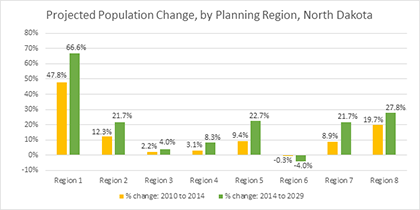
An understanding of future population characteristics can improve planning for future housing needs and aid in decision making. Accordingly, the projected increase in population was described using various characteristics, namely age, household income, and type of homebuyer.
A key change in the composition of the population in the future will be the increase in those age 65 and older. The population of those age 65 and older were projected to increase by 52 percent over the course of the study period. The last of the baby boomers, those born in 1964, begin turning 65 in 2029, the last year of the study period. The substantial increase in seniors could have multiple implications for addressing future housing needs. Similar to the increase in population of individuals 65 and older, the number of elderly homebuyers, defined as those over age 65, is projected to increase by 54 percent or approximately 37,500 households. Reflective of the increases in population in younger age cohorts, the number of first-time home buyers is projected to increase by 25 percent.
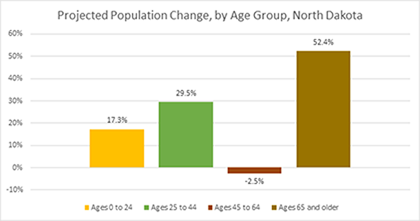
Projected change in the number of households by income is also a useful indicator of potential future housing needs. Double digit growth is projected across all household income levels statewide. Housing needs will be especially acute for lower income households and elderly households. Projected change in the number of households is the greatest for extremely low and very low income households with projected increases of 24 and 25 percent, respectively. Percentage change in the number of low and lower moderate income households is 21 percent each, while change in number of moderate and upper income households is projected to be 19 and 20 percent, respectively.
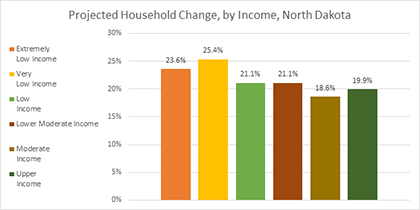
The state has experienced substantial growth over the course of the past five to eight years, resulting in a reversal of decades’ long trends in population and key socio-economic indicators. Despite a steep decline in oil and gas development activities, thousands of jobs have been added in the state and the state’s economy is considerably larger than it was just a few years ago. Economic growth is especially strong in the state’s largest urban areas, where the economy is more diversified. Population growth has been driven by strong in-migration as a result of employment opportunities in the state and from a substantial increase in the prime child bearing age cohort. Reversing a decades’ long trend of an aging population, the state’s population has become younger in recent years.
While the state overall has experienced growth, a one-size-fits-all approach is not appropriate due to regional variability. Some communities will continue to be faced with challenges associated with decreasing populations and less robust economic conditions. Other communities have grown substantially in recent years and will likely continue to grow in the future and will be faced with challenges and issues related to managing growth. However, one thing that is consistent across all regions is the need for affordable housing. First-time homebuyers and low income households are projected to increase in nearly every region of the state. The number of elderly households is projected to increase in every region of the state. Projections of the number of younger households is also projected to increase in the future. The state has changed substantially in recent years and will likely continue to grow in the future. An improved understanding of recent trends as well as insight into future population growth and population characteristics can help guide planning efforts and decision making as state and local leaders, developers, and others plan for the future.
